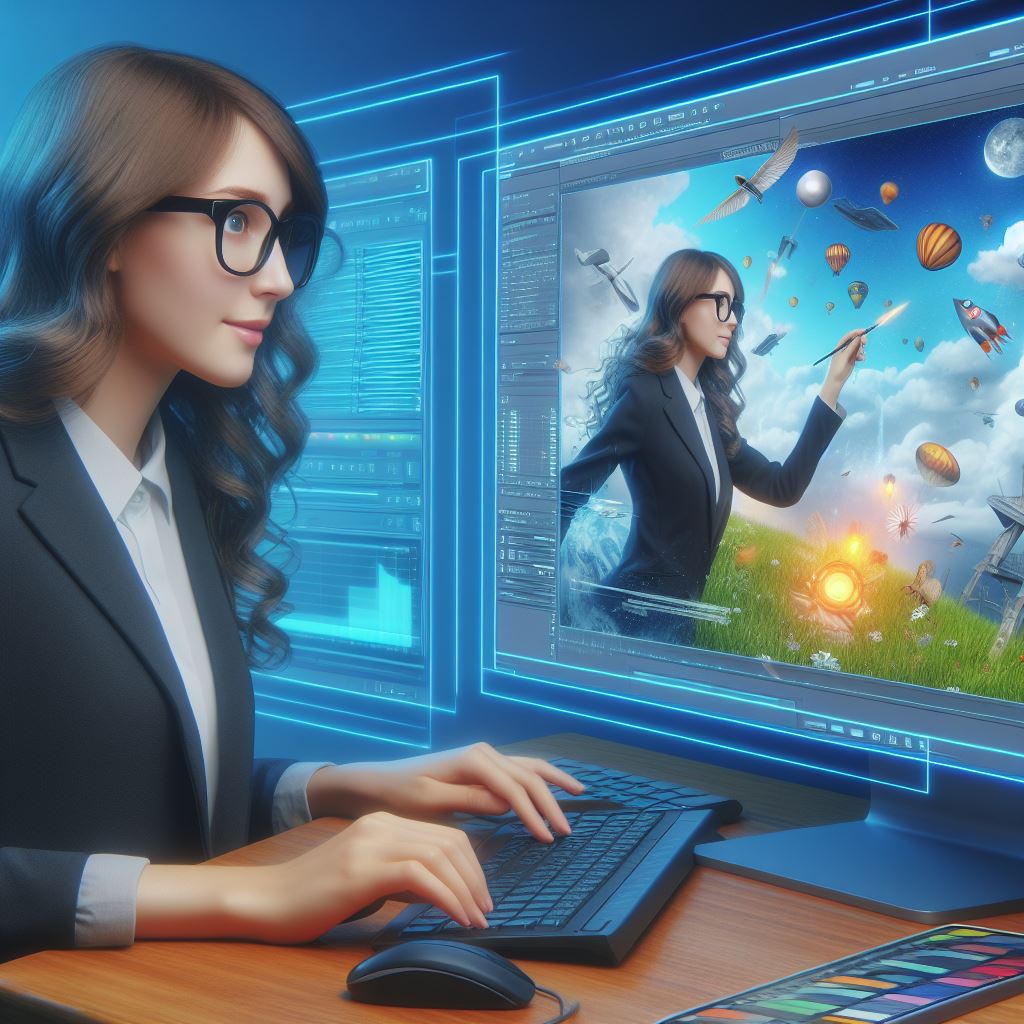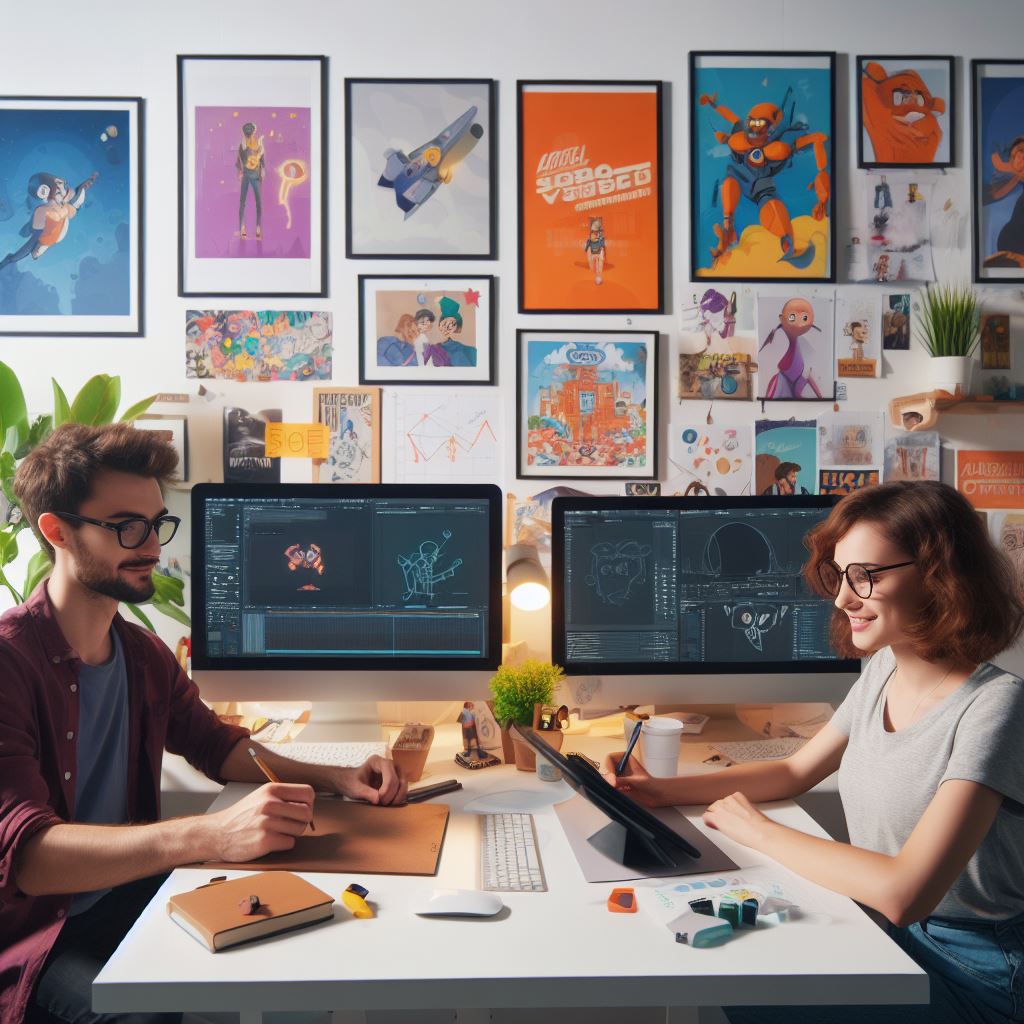Introduction
Animation is a dynamic career field that involves creating moving images and visual effects. Understanding the differences between 2D and 3D animation careers is crucial for aspiring animators.
Animation is a captivating career field that involves creating moving images and visual effects.
It is a highly creative and technical industry that requires a combination of artistic skills, computer proficiency, and a passion for storytelling.
In order to pursue a successful career in animation, aspiring animators need to have a clear understanding of the differences between 2D and 3D animation careers.
While both 2D and 3D animation involve bringing static images to life, the techniques, skills, and job prospects differ significantly.
2D animation, also known as traditional animation, involves creating motion in a two-dimensional space.
It is usually done by hand-drawing frames and animating them in sequence. 2D animation is often associated with classic cartoons and hand-drawn animated films.
On the other hand, 3D animation involves creating realistic three-dimensional objects and environments.
It requires working with advanced computer software and modeling techniques to bring characters and scenes to life. 3D animation is widely used in movies, video games, and visual effects.
Understanding the differences between these two types of animation careers is crucial for aspiring animators.
It not only helps them determine their area of interest and expertise but also enables them to make informed career choices.
By recognizing the unique skills, software proficiency, and industry demands associated with each type of animation, individuals can develop a focused career path.
In general, animation is an exciting field that offers numerous career opportunities.
Whether aspiring animators choose to pursue a career in 2D or 3D animation, it is important for them to understand the differences between the two.
This understanding will help them navigate the industry, hone their skills, and make informed decisions about their career trajectory.
Read: The Challenge of Diversity & Representation in US Art Spaces
Overview of 2D Animation Careers
Definition and characteristics of 2D animation
- 2D animation involves creating movement in a two-dimensional artistic space.
- It uses traditional hand-drawn techniques or computer software to bring images to life.
- Key characteristics of 2D animation include simplicity, flatness, and expressive visuals.
- It focuses on storytelling and often appeals to a wide range of audiences.
- 2D animation is widely used in television shows, movies, advertisements, and video games.
Historical use and evolution of 2D animation in the US
- 2D animation has a long history, dating back to the early days of animation.
- In the US, iconic characters like Mickey Mouse and Bugs Bunny were created using 2D animation.
- Over the years, technology has advanced, allowing for more complex and detailed 2D animations.
- With the rise of computer animation, traditional 2D animation has faced some challenges.
- It continues to thrive, capturing the charm and nostalgia of hand-drawn techniques.
Skills required for a successful 2D animator
- A strong foundation in drawing and composition is essential for 2D animators.
- They need to understand movement, timing, and storytelling principles.
- Proficiency in software such as Adobe Animate or Toon Boom Harmony is crucial.
- Attention to detail, creativity, and the ability to work collaboratively are also important skills.
- Continuous learning and staying updated with industry trends are necessary for growth.
Industries that employ 2D animators in the US
- Television animation studios, such as Cartoon Network and Nickelodeon, offer opportunities for 2D animators.
- Movie production companies, both independent and major studios, often employ 2D animators.
- Advertising agencies utilize 2D animation for commercials and digital marketing campaigns.
- Video game development companies hire 2D animators for character design and animation.
- Educational institutions and e-learning companies also require 2D animators for interactive content.
Job prospects and salary potential for 2D animators
- The job market for 2D animators is competitive, but there is a demand for skilled professionals.
- While some studios are shifting towards 3D animation, there is still a niche for 2D animators.
- Freelancing and self-employment opportunities are common in the 2D animation industry.
- Salary potential for 2D animators varies based on experience, location, and industry.
- Entry-level positions may offer around $40,000 per year, while experienced animators can earn over $100,000.
In essence, 2D animation offers a unique form of storytelling and continues to be relevant in various industries.
With the right skills and a passion for creativity, individuals can pursue successful careers as 2D animators in the US.
As technology advances, the field may continue to evolve, but the charm and beauty of hand-drawn animation will always have its place in the industry.
Read: Balancing Art and Activism: US Artists Making a Statement
Transform Your Career Today
Unlock a personalized career strategy that drives real results. Get tailored advice and a roadmap designed just for you.
Start Now
Learn More: Fashion Design: Working with a Team
Discover More: Effective Use of Space in Exhibition Design
Overview of 3D Animation Careers
Definition and characteristics of 3D animation
3D animation refers to the use of computer-generated imagery to create animated visuals that appear three-dimensional.
It involves the manipulation of objects and characters in a virtual environment, giving the illusion of depth.
Evolution of 3D animation in the US and its popularity
3D animation has witnessed significant growth and advancement in the United States over the years.
With the introduction of groundbreaking technologies, such as Pixar’s Toy Story in 1995, 3D animation gained immense popularity.
It revolutionized the animation industry and paved the way for numerous successful 3D animated films and TV shows.
Skills required for a successful 3D animator
- Proficiency in animation software, such as Maya, 3ds Max, or Blender, is essential.
- Strong knowledge of principles of animation, including timing, weight, and physics.
- Creativity and a keen eye for detail to bring characters and objects to life.
- Ability to work collaboratively in a team and effectively communicate ideas.
- Problem-solving skills to overcome technical challenges and optimize workflows.
Industries that employ 3D animators in the US
3D animators are in demand across various industries, including film and television, video gaming, advertising, and architecture.
In the film and television industry, 3D animators create captivating visual effects, animated characters, and virtual environments.
In the gaming industry, they develop lifelike animations for characters, objects, and game mechanics.
Advertising agencies utilize 3D animators to create engaging and eye-catching commercials and advertisements.
Architectural firms rely on 3D animators to visualize buildings and structures before they are constructed.
Job prospects and salary potential for 3D animators
The job prospects for 3D animators in the US are promising, with a projected growth rate of 4% from 2019-2029.
The salary potential for 3D animators varies based on experience, location, and industry.
On average, 3D animators in the US earn around $65,000-$75,000 per year.
Experienced professionals with a strong portfolio and specialized skills can earn even higher salaries, exceeding $100,000 annually.
Generally, 3D animation careers in the US offer exciting opportunities for individuals with a passion for digital art and animation.
The evolution of 3D animation and its widespread popularity have opened doors to various industries and lucrative job prospects.
By acquiring the necessary skills and staying updated with technological advancements, aspiring 3D animators can thrive in this dynamic field.
Showcase Your Business Today
Reach thousands of readers actively exploring professional services. Publish your business profile and grow your audience now.
Publish NowRead: Cultural Influences in American Interior Design Trends
Discover More: How to Price Your Work as a Freelance Storyboard Artist
Differences between 2D and 3D Animation Careers
Technical aspects
- Tools and software used in 2D animation include Adobe Animate, Toon Boom Harmony, and TVPaint.
- Tools and software used in 3D animation include Autodesk Maya, Blender, and Cinema 4D.
Visual style and storytelling approach
- 2D animation has limitations in terms of realism but offers more artistic freedom and diverse visual styles.
- 3D animation allows for realistic visuals and effects, offering possibilities in terms of animation and storytelling.
Job responsibilities and tasks
- In 2D animation, animators often work on a frame-by-frame basis, creating each image or drawing.
- In 3D animation, animators focus on model creation, rigging, and the manipulation of virtual 3D objects.
Collaboration opportunities
- 2D animation projects often have a smaller team structure, with animators working closely together.
- In 3D animation, animators collaborate with other professionals such as 3D modelers, riggers, and texture artists.
Industry demand and trends
- Recent trends show a resurgence in demand for 2D animators in industries like advertising, gaming, and web.
- There is a growing demand for 3D animators in various industries, including film, television, gaming, and virtual reality.
In animation, 2D and 3D careers differ significantly, encompassing technical tools, visual style, storytelling, responsibilities, collaboration, and industry demand.
2D animators use tools like Adobe Animate, fostering artistic freedom with diverse visual styles.
3D animators employ software like Autodesk Maya, creating realistic visuals and immersive experiences.
Job tasks vary, with 2D animators working frame by frame, emphasizing attention to detail and timing.
3D animators focus on model creation and rigging, manipulating virtual 3D objects for fluid movements.
Collaboration in 2D projects involves a smaller team structure, promoting close-knit teamwork and idea exchange.
3D animators collaborate with modelers, riggers, and texture artists, ensuring seamless integration of complex 3D models.
Industry trends show a resurgence in demand for 2D animators in advertising, gaming, and web industries.
There’s a growing demand for 3D animators in film, TV, gaming, and virtual reality, driven by realistic visuals.
Aspiring animators must weigh these distinctions to align their interests, skills, and career goals effectively.
Read: Navigating Client Expectations: Tips for US Designers
Explore Further: Essential Tools for Modern Packaging Designers
Conclusion
Recap of the Main Differences Between 2D and 3D Animation Careers
In wrapping up, let’s recap the key distinctions between 2D and 3D animation careers. While 2D animation focuses on traditional drawing techniques, 3D animation utilizes digital modeling and rendering.
2D animators breathe life into characters and scenes through hand-drawn frames, fostering a classic and artistic approach.
On the other hand, 3D animators delve into a realm of virtual three-dimensional spaces, creating lifelike characters and environments with computer-generated imagery.
Importance of Considering Personal Interests and Career Goals When Choosing Between the Two Paths in Animation
Choosing between 2D and 3D animation isn’t just about technique; it’s about personal interests and career goals.
Consider what resonates with your creative spirit and aligns with your long-term aspirations. If you lean towards storytelling and artistic expression, 2D might be your avenue.
Conversely, if the allure of digital worlds and intricate modeling captivates you, the 3D path might better suit your ambitions.
Encouragement to Explore Both 2D and 3D Animation Careers to Gain More Skills and Expand Opportunities
Don’t limit yourself to just one path. Exploring both 2D and 3D animation broadens your skill set, making you a versatile animator.
By embracing both worlds, you not only enhance your capabilities but also open doors to a wider array of opportunities.
Aspiring animators, consider this a call to venture into both realms, discovering the nuances of each and ultimately expanding your horizons in the captivating field of animation.
[E-Books for Sale]
The Big Book of 500 High-Paying Jobs in America: Unlock Your Earning Potential
$19.99 • 500 High-Paying Jobs • 330 pages
Explore 500 high-paying jobs in America and learn how to boost your career, earn more, and achieve success!
See All 500 High-Paying Jobs of this E-Book
1001 Professions Without a Degree: High-Paying American Jobs You Can Start Now
$19.99 • 1001 Professions Without a Degree • 174 pages
Discover 1001 high-paying jobs without a degree! Unlock career tips, skills, and success strategies for just $19.99!




